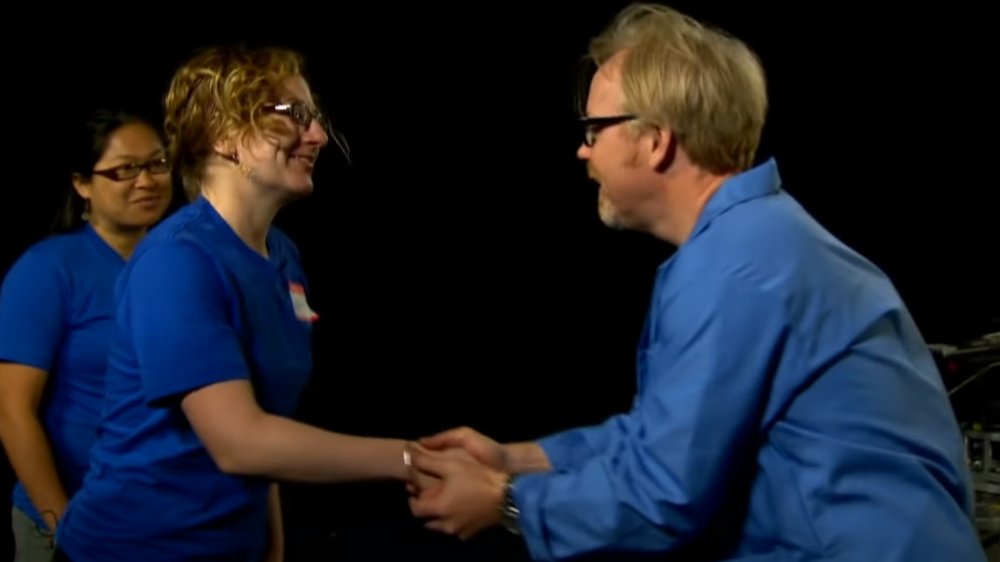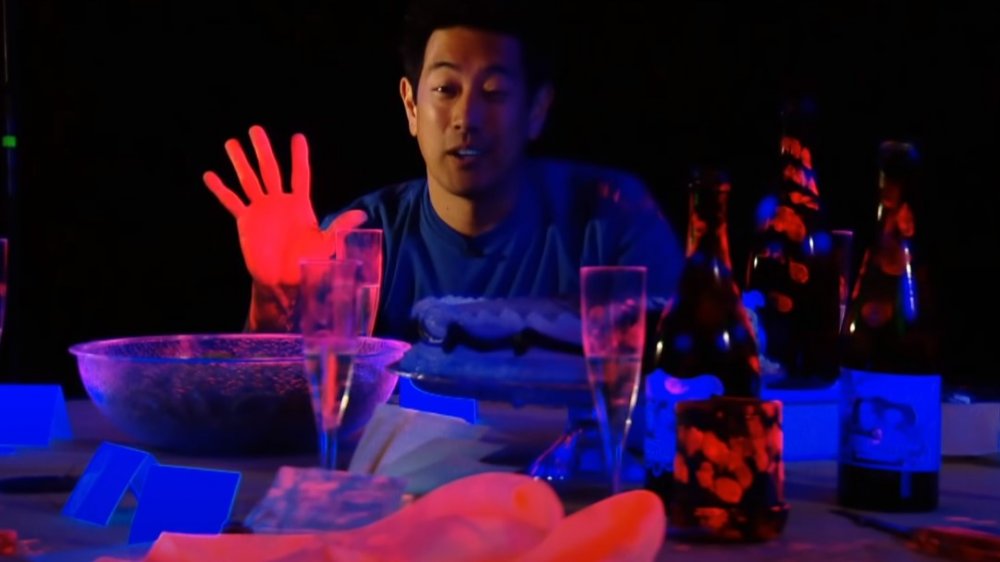Here's What Mythbusters Taught Us About Viruses
In these uncertain times, we, like the Jokers of old, find ourselves asking "hubba hubba hubba, who can you trust?" And time and time again, the answer has proven itself to be "the guys from Mythbusters and nobody else."
Case in point: there's a cultural struggle that nobody saw coming. On one side, you have doctors, virologists, and researchers. On the other, there's a growing, vocal contingent of the population asking "are germs really that bad?" Helpfully, it turns out that the Discovery Channel has this one covered, and not even in a partisan way: they're universally trusted thanks to their introduction of the world's only pantheologically celebrated holiday, Shark Week.
In a 2010 episode of Mythbusters titled "Flu Fiction," the reality of the way germs can spread is spelled out in simple, easy to follow terms using the crew's patented show-don't-tell approach to science. It's illuminating. And gross.
No good news ever comes from blacklights
The episode is broken up into sections, with one part dedicated to determining whether a sneeze travels 100 miles per hour (it doesn't) and another to whether sneeze droplets can travel up to 30 feet (they can't.)
But the meat of the story comes via a simulated dinner party. The experiment, which has since, appropriately enough, gone viral, tested whether a person with a cold can spread their germs to almost anyone in the immediate area. Mythbusters co-host Adam Savage was hooked up with a hidden syringe filled with fluorescent dye. The syringe, attached to Savage's face, is rigged to release 60 milliliters of "snot" per hour, then worn during a 30 minute dinner party hosted by the acclaimed buster of myths.
At the end of the experiment, the guests were examined under a blacklight, and all but one was found to be "heavily contaminated." It's a sobering reminder that, yes, we really are all super disgusting.

